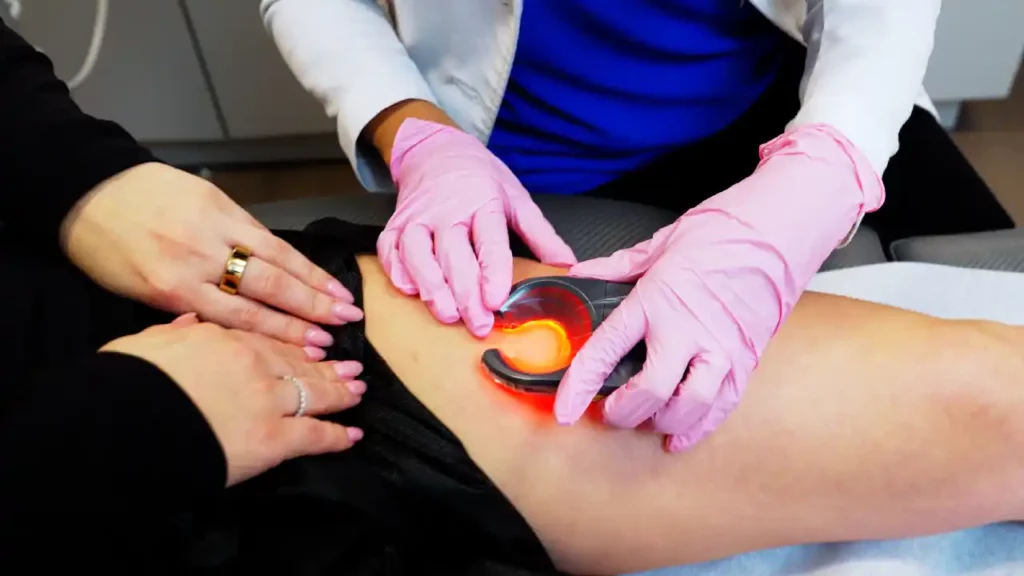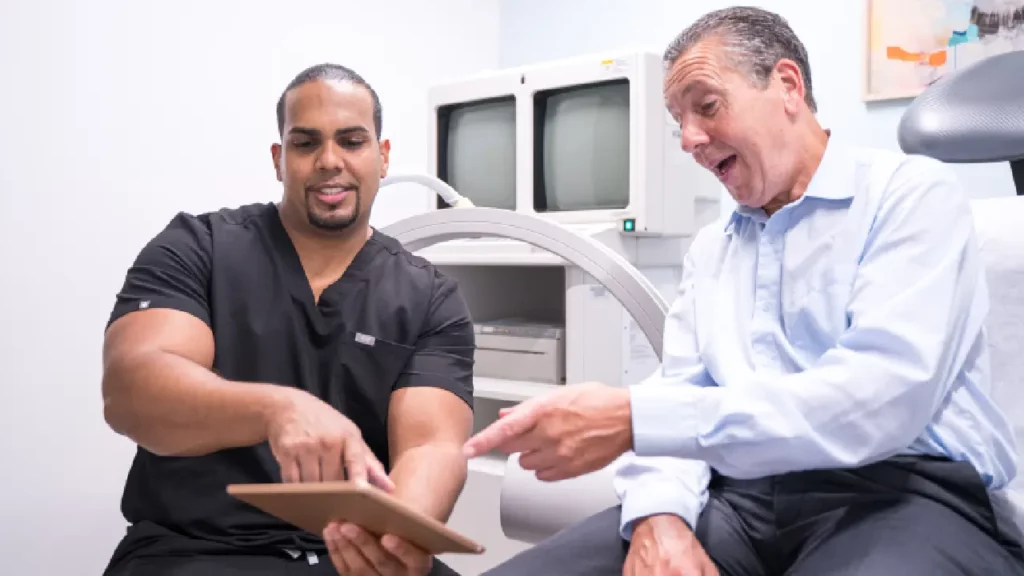Veins: The Key to Healthy Circulation and Treatment Options
You’re at the end of a long day, and as you finally sit down to relax, you notice a dull ache in your legs. You glance down and see faint blue lines criss crossing your skin—veins that have become more noticeable over time. Perhaps you’ve also observed slight swelling in your ankles or the appearance of tiny clusters of red and purple veins near your knees. While these may seem like minor cosmetic issues, they could be early signs of vein problems that, if left untreated, could impact your overall health.
Veins play a critical role in your body’s circulatory system, ensuring that blood flows efficiently back to your heart. When veins become damaged or weakened, they can cause a variety of issues, from the unsightly appearance of spider veins to more serious conditions like varicose veins and chronic venous insufficiency. Understanding how your veins function and knowing the treatment options available can help you maintain healthy circulation and prevent complications. At Vein Treatment, we help you understand your veins and your treatment options.
Veins: What Do They Do?
Your veins are responsible for carrying deoxygenated blood back to your heart. The process starts with your arteries, which deliver oxygen-rich blood from your heart to the rest of your body. Once the oxygen is used by your cells, the blood must return to your heart to be re-oxygenated. This return journey is where your veins come in.
Veins have a unique structure that allows them to transport blood against gravity, especially from your legs and feet back to your heart. They are equipped with one-way valves that prevent blood from flowing backward. However, when these valves weaken or become damaged, blood can pool in the veins, leading to a condition known as chronic venous insufficiency (CVI).
CVI can cause varicose veins, which are large, swollen veins that often appear twisted or bulging under the skin. In addition to being a cosmetic concern, if left untreated, varicose veins can lead to discomfort, pain, and more severe health issues. Spider veins are a milder form of vein damage, characterized by small, thin veins that appear close to the surface of the skin. While they are usually harmless, spider veins can be an early indicator of underlying vein problems and should not be ignored.
Are you interested in getting more information about your condition or a treatment?
Fill the form below to start!
How to Maintain Healthy Blood Circulation
Maintaining healthy blood circulation is essential for preventing vein problems and ensuring overall well-being. Here are some tips to keep your circulatory system in top shape:
- Stay Active: Regular physical activity is crucial for healthy circulation. Exercises like walking, swimming, and cycling help promote blood flow, strengthen your veins, and reduce the risk of blood pooling in your legs. Even simple activities like taking short walks during your workday or stretching can make a significant difference.
- Elevate Your Legs: Elevating your legs above the level of your heart for a few minutes each day can improve circulation, especially if you spend long periods sitting. This allows gravity to assist in moving blood back toward your heart, reducing the pressure on your veins.
- Wear Compression Stockings: Compression stockings are a practical way to support your veins and improve blood flow. These specially designed stockings apply gentle pressure to your legs, helping to prevent blood from pooling in your veins. They are beneficial for people who are at risk of developing varicose veins or those who already have vein-related issues.
- Maintain a Healthy Weight: Carrying excess weight puts additional pressure on your veins, particularly in your legs. By maintaining a healthy weight through a balanced diet and regular exercise, you can reduce the strain on your veins and lower your risk of developing varicose veins and other circulatory problems.
- Stay Hydrated: Proper hydration is vital for maintaining good circulation. Drinking enough water helps keep your blood thin and flowing smoothly, reducing the risk of clot formation and other circulatory issues.
Treatment Options for Vein Problems
If you’re already experiencing vein problems, don’t worry—several effective treatments can restore healthy circulation and improve the appearance of your veins. At Vein Treatment, we offer a range of minimally invasive spider vein and varicose vein treatments to target the root cause of your vein issues and provide lasting relief.
Endovenous Laser Ablation
Endovenous laser ablation (EVLA) is a highly effective treatment for varicose veins. During the procedure, a small laser fiber is inserted into the affected vein. The laser delivers controlled heat, causing the vein to collapse and seal shut. Over time, the treated vein is absorbed by the body, and blood is rerouted to healthier veins. EVLA is performed under local anesthesia, and patients can return to their normal activities shortly after the procedure.
Radiofrequency Ablation
Radiofrequency ablation (RFA) is similar to EVLA but uses radiofrequency energy instead of laser energy to treat varicose veins. A thin catheter is inserted into the problematic vein, and radiofrequency waves are used to heat the vein walls, causing them to collapse and close off. RFA is also minimally invasive and has a high success rate, making it an excellent option for those seeking relief from varicose veins.
VenaSeal
VenaSeal is a unique treatment that uses a medical adhesive to close off the affected vein. The adhesive is delivered through a small catheter, and once the vein is sealed, blood is naturally rerouted to healthier veins. VenaSeal is a quick procedure that doesn’t require anesthesia, and patients often experience immediate symptom relief. It’s an ideal option for those looking for a non-thermal, non-surgical treatment.
ClariVein
ClariVein is a cutting-edge treatment that combines mechanical and chemical techniques to treat varicose veins and underlying chronic venous insufficiency. A rotating catheter is used to disrupt the lining of the vein while simultaneously delivering a sclerosing agent that seals the vein shut. ClariVein is minimally invasive, requires no heat, and is an excellent option for patients who may not be candidates for thermal ablation.
Sclerotherapy
Sclerotherapy is a popular treatment for spider veins and small varicose veins. A sclerosing solution is injected directly into the affected veins, causing them to collapse and fade from view. Sclerotherapy is a quick procedure with minimal discomfort and no downtime, making it a convenient option for patients looking to improve the appearance of their veins.
Contact our Vein Doctors for expert vein care
If you’re experiencing symptoms of vein problems or are concerned about the appearance of your veins, our team of expert vein doctors at Vein Treatment is here to help. We specialize in diagnosing and treating a wide range of vein conditions, using the latest minimally invasive techniques to ensure optimal outcomes. Contact us to schedule a consultation at one of our state-of-the-art vein clinics in New York, New Jersey, Long Island, Maryland, or California.









